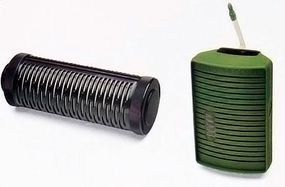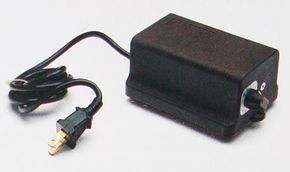Aquarium Filter Designs: Box, Power, and Canister Filters
Mechanical aquarium filters all serve the same function, but they come in a variety of different designs: inside box filter, inside power filter, outside power filter, and canister filter.
Each type of filter has its own system for creating water flow, and each type has its own advantages and disadvantages. All will work well depending on the capacity of the filter, the size of the tank, and the amount of maintenance the filter receives.
Advertisement
Nearly all mechanical filters also have a compartment to hold activated granular carbon, so that they act as efficient chemical filters as well.
To avoid having the carbon become covered with solid matter, which would keep it from adsorbing the chemical wastes, the water should pass through the mechanical filtering material first. That way, the solid matter will be removed from the water before it reaches the carbon.
The inside box filter is the simplest and least expensive of all mechanical filters. The filter is set up inside the aquarium itself, and it can be relatively effective in smaller tanks.
Bubbles from a tube or air stone inside the box draw water through it. The bubbles rising to the surface from the box also help aerate the tank. The box itself is filled with Dacron filter material and a quantity of granular activated carbon.
There are a few drawbacks to the inside box filter. It is not very effective in large aquariums. From a visual standpoint, it adds nothing to the appearance of the tank, although it can sometimes be hidden successfully behind plants or a large rock. Also, changing the filter material requires removing the unit from the tank.
The inside power filter is similar to the box filter except that a motor pumps water through the filter at a much faster rate. The greater flow rate will act to improve filtration.
As with the air-driven box filter, though, visual appearance and maintenance are drawbacks. In addition, you will probably also need air stones to provide sufficient aeration for the tank.

An outside power filter hangs on the back of the tank and has intake and outflow tubes that sit inside the tank. An outside power filter offers many advantages over internal filters.
Because it is behind the tank, the filter itself cannot be seen, although the intake and outflow tubes will be somewhat visible. The boxes of these filters are large, too, so more filter material and granular activated carbon can be used, increasing the amount of mechanical and chemical filtration.
Also maintenance of these filters is usually much easier because they are not submerged in the aquarium.
Some outside power filters use cartridges or bags of carbon that are prefilled by the manufacturer. If the cartridge or bag doesn't fit tightly in the space allocated for it in the filter box, the effectiveness of the chemical filtration will be reduced. This is because water takes the route of least resistance, and it will flow around the cartridge or bag if there is space rather than being forced through the carbon.
To remedy this situation, slit open the cartridge or bag and fill it with more carbon. This will create a tighter fit while providing more carbon for chemical filtration.
Outside power filters also have much higher flow rates. In order for mechanical and chemical filtration to be effective, the filter should process the volume of the tank four to five times each hour. In larger tanks, these flow rates are only possible with outside power filters and canister filters.
Canister filters differ from outside power filters in that hoses transport the water from the tank through the filter and then back to the aquarium. The canister filter can sit under the tank or on a shelf, although some have optional brackets to attach the filter to the back of the tank.
As a general rule, canister filters cannot move as much water as outside power filters, primarily because of the length and diameter of the hoses. In addition, some aquarists believe that canister filters are more difficult to maintain than outside power filters.
One unique type of canister filter is the diatomaceous earth filter. Some regular canister filters have special inserts for this purpose, whereas others are designed specifically for this kind of filtration.
Diatomaceous earth (a very fine white powder) is used to coat a special material in the filter through which the water flows. The filter is run for two or three hours, during which time the gravel is stirred occasionally to release any solid matter in it. Extremely small particles can be removed with this type of mechanical filtration, making the water very clear.
A diatomaceous earth filter is not designed for continuous operation because the filtration material clogs within hours.
Learn about another aquarium filter design -- undergravel filters -- in the next section.
